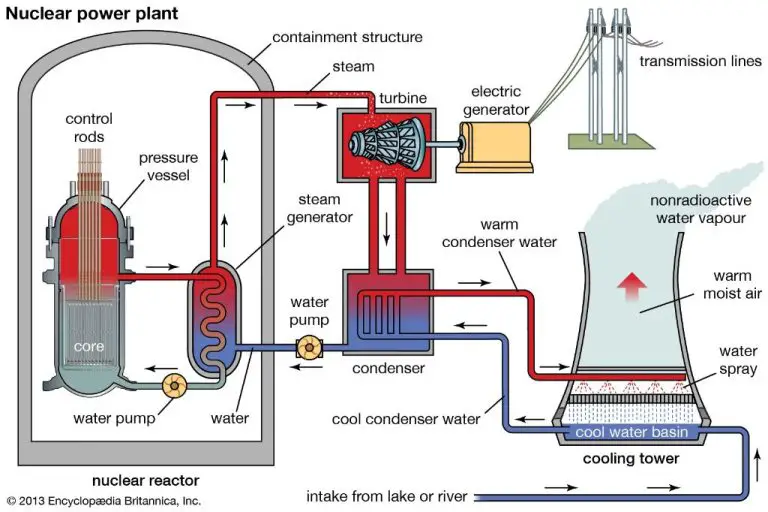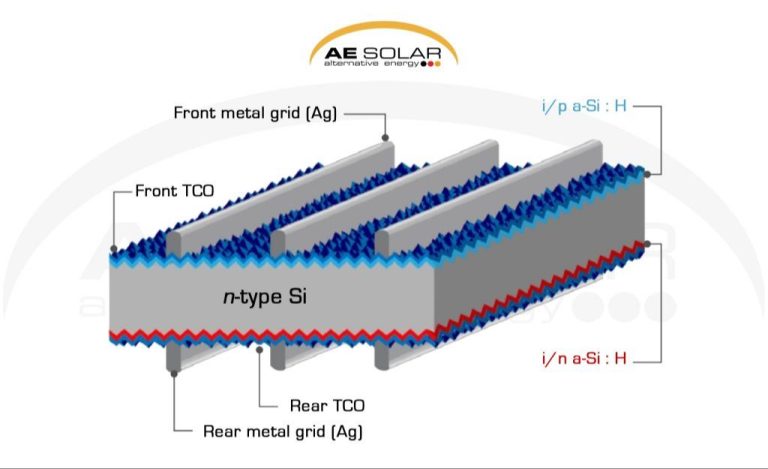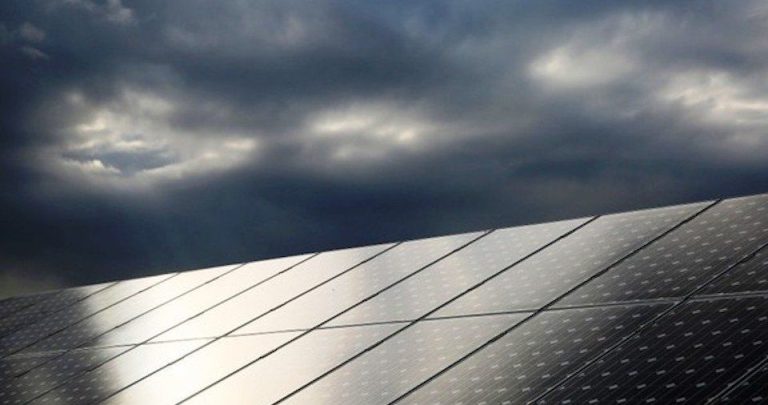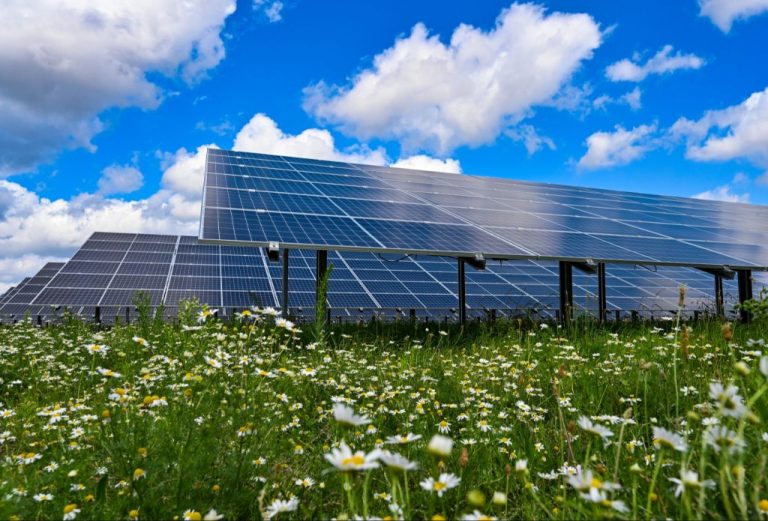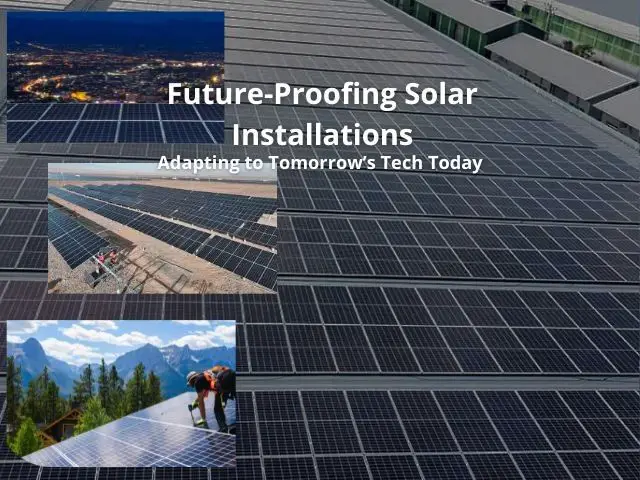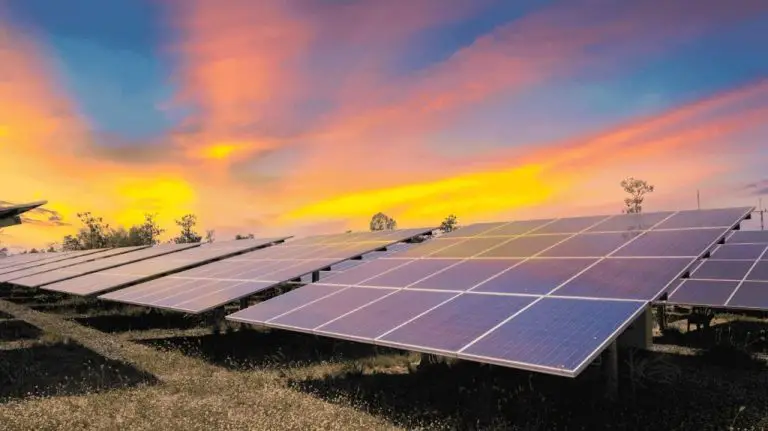Why Don T Solar Panels Use Mirrors?
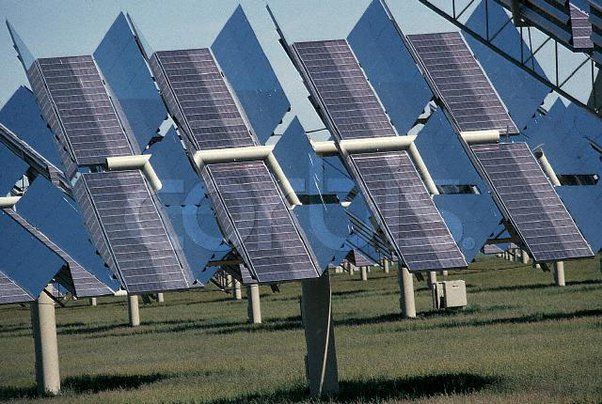
Solar panels are devices that convert sunlight into electricity using photovoltaic (PV) cells. PV cells are made of semiconducting materials that absorb photons from sunlight and convert that energy into electricity through the photovoltaic effect. An important aspect of PV cells is that they can convert both direct and diffuse sunlight into electricity [1]. This allows solar panels to produce power even on cloudy days.
This article examines why solar panels do not use mirrors to concentrate or redirect sunlight onto the PV cells. We’ll look at the way PV cells are designed and factors that impact their efficiency. The goal is to explain why mirrors are generally not compatible with the way standard solar panels work.
How Mirrors Reflect Light
Mirrors reflect light due to the phenomenon known as the law of reflection. This law states that the angle of incidence of a light ray equals its angle of reflection. When light hits a smooth, polished surface like a mirror, it bounces off at the same angle as it came in.
To understand how this works, imagine a laser pointer aimed at a mirror’s surface. The incoming ray that strikes the mirror is called the incident ray, and the angle it makes with the mirror’s surface is known as the angle of incidence. The reflected ray bouncing off the mirror makes an equal but opposite angle relative to the mirror’s surface – this is called the angle of reflection. So if the incident ray hits the mirror at a 30 degree angle, the reflected ray bounces off at a 30 degree angle on the other side of the normal line.
The perfect reflection from polished mirror surfaces is partly due to the law of reflection, but also because mirrors have a smooth surface with uniform thickness. The smoothness ensures an equal angle of incidence and reflection over the entire surface area. The uniform thickness also enables the efficient reflection of all light wavelengths in the visible spectrum.
In summary, mirrors reflect incoming light at equal but opposite angles to the surface normal, according to the law of reflection. This reliable directional reflection makes mirrors such a useful tool for redirecting and bending light beams.
Photovoltaic Cell Design
PV cells are designed to absorb light directly, rather than using reflected light. This is achieved through the semiconductor material and junctions within the cell. Silicon is commonly used, which is ‘doped’ with other elements to create the p-n junction that generates electricity when exposed to light.
Doping introduces impurity atoms into the semiconductor crystal lattice, changing the number of free electrons and holes. This allows control of the material’s conductivity. An n-type semiconductor is doped to increase free electrons, while p-type increases holes. Bringing n-type and p-type silicon together creates a p-n junction with a built-in electric field.
When light hits the cell, photons excite electrons in the n-type side to move into the p-type side, generating current flow. PV cells are optimized to absorb light across the solar spectrum, directly converting photons to electricity through this photoelectric effect rather than relying on reflected light as mirrors would provide.
Proper levels of doping are crucial in PV cell design. As explained by PVEducation, heavy doping on the front side improves conductivity but too high doping can increase recombination.
Angle of Incidence
The angle at which sunlight strikes a solar panel, known as the angle of incidence, has a significant impact on the efficiency and power output of the solar panel. Research shows that solar cell efficiency remains relatively constant at angles of incidence between 0° to 45°, but drops off sharply at higher angles. This is because photovoltaic cells are designed and optimized to absorb light perpendicular to their surface.
At higher angles of incidence, the sunlight has to pass through more material which increases reflection and absorption losses before reaching the photovoltaic material. In addition, the path length of sunlight through the solar cell increases at higher incidence angles, resulting in more opportunity for recombination and energy loss. This reduces the number of electron-hole pairs generated and lowers the cell’s power output.
Direct beam irradiation strikes the solar panel at a defined angle, while diffuse irradiation strikes from many angles after being scattered by the atmosphere. Solar panels produce the most power from direct beam light at an optimal angle of incidence. Reflected light reaches the solar panel at varying angles, making it more difficult to optimize efficiency.
Diffuse vs Direct Irradiation
Sunlight reaches the Earth’s surface as either direct or diffuse irradiation. Direct sunlight travels directly from the sun without scattering. Diffuse sunlight is scattered by molecules and particles in the atmosphere before reaching the Earth’s surface (Source).
Photovoltaic (PV) solar panels work best with direct irradiation at a 90 degree angle. Diffuse sunlight is less concentrated and strikes the panels at oblique angles, reducing energy generation. PV panels are designed to maximize absorption of direct sunlight. The cells are dark surfaces arranged horizontally to face incoming sunlight. Diffuse irradiation is less efficient for PV power generation compared to concentrated direct irradiation (Source).
Solar irradiance data makes a distinction between direct normal irradiance (DNI) versus global horizontal irradiance (GHI), which includes both direct and diffuse light. DNI is optimal for PV efficiency. Locations with consistent clear skies have abundant DNI while cloudier climates have more diffuse irradiance (Source).
Tracking Systems
Solar tracking systems mechanically optimize the angle of solar panels to track the sun throughout the day. By continually adjusting the angle as the sun moves across the sky, tracking systems can increase the total daily energy output by 20-30% compared to fixed tilt systems (1).
Common tracking methods include single-axis tracking, which rotates panels along one axis, and dual-axis tracking, which provides tilt and rotation in multiple directions for maximum sunlight exposure. While more complex, dual-axis trackers can increase energy yield up to 40% (2).
Tracking systems do not require mirrors to increase efficiency. Their mechanical movement alone provides improved exposure as the sun’s position changes. Companies like NEXTracker and Array Technologies manufacture advanced tracking equipment to maximize energy production.
However, tracking systems also add cost, maintenance, and reliability considerations versus fixed tilt systems. Therefore, they may not be cost effective in some situations (3). The optimal solution depends on location, electricity rates, and other factors.
- (1) https://www.energysage.com/business-solutions/solar-trackers-everything-need-know/
- (2) https://iopscience.iop.org/article/10.1088/1757-899X/993/1/012124/meta
- (3) https://www.sciencedirect.com/science/article/pii/S2665917423001617
Additional Losses
When sunlight reflects off a mirror onto a solar panel, there are additional losses compared to direct sunlight hitting the panel. Some key factors that contribute to these losses include:
– Reflectivity of the mirror surface. No mirror perfectly reflects 100% of light. Even high-quality mirrors typically lose 2-5% of light due to imperfect reflection (https://www.mdpi.com/1996-1073/13/16/4198). This reduces the total amount of light hitting the solar panel.
– Angle of incidence. When light reflects off a mirror onto the panel, it hits at an angle instead of directly perpendicular. This angled light gets spread over a larger panel surface area, reducing efficiency as per the cosine law (https://community.goodsam.com/t5/-/-/td-p/308097). Direct perpendicular light maximizes panel illumination.
– Light absorption. Mirrors are not 100% reflective, so some light gets absorbed as heat in the mirror, reducing the amount of light redirected to the panel. This absorption loss is greater at longer wavelengths.
– Light scattering. Microscopic irregularities in mirror surfaces scatter some light rather than reflecting it perfectly. This stray scattered light never makes it to the solar panel.
Overall, mirrors add 2-10% in combined optical losses versus direct sunlight on a panel. Concentrator PV systems with mirrors require higher-efficiency solar cells to compensate for these reflection inefficiencies.
Concentrator Photovoltaics
Concentrator photovoltaics (CPV) is a niche technology that uses mirrors and lenses to concentrate sunlight onto a small, highly efficient photovoltaic cell [1]. The concentrated light increases the power output of the PV cell. CPV systems use movable mirrors and lenses to track the sun throughout the day and optimize the light concentration [2].
While CPV can achieve higher efficiencies than conventional PV, it requires more complex solar tracking and heat dissipation systems. The concentrated sunlight also requires more expensive PV cell materials to withstand the higher intensities. As a result, CPV represents only a small fraction of the overall solar PV market.
CPV demonstrates that mirrors can be used to improve solar energy capture in certain niche applications. But for mainstream PV, the added complexity generally does not justify the modest efficiency gains compared to simpler fixed flat panel systems.
Improving Efficiency
There is ongoing research focused on improving the efficiency of solar cells using nanotechnology and new materials. For example, one study looked at controlling the annealing effects in TiO2 thin films to reduce defects and improve efficiency (https://onlinelibrary.wiley.com/doi/full/10.1002/pssa.202300647). Other research has focused on using perovskites as light absorbers, carbon nanotubes, quantum dots, and plasmonics to increase efficiency beyond traditional limits.
Material science innovations are also contributing, such as using organic-inorganic halide perovskites, kesterite thin film solar cells, and improving crystalline silicon. The goal is to use advanced materials to improve light absorption, reduce charge carrier recombination, and enhanced charge extraction (https://eepower.com/market-insights/researchers-reimagine-material-science-for-next-gen-solar-cells/).
In general, studies show that solar cell efficiency improvements are strongly correlated with investments in R&D. As more resources are devoted to solar cell research, new breakthroughs in nanotechnology, material science, and quantum effects could unlock substantial efficiency gains beyond current limits (https://www.pv-magazine.com/2023/01/06/solar-cell-efficiency-growth-proportional-to-rd-volumes/).
Conclusion
In summary, there are several key reasons why most standard photovoltaic solar panels do not utilize mirrors:
- PV cells are designed to absorb light perpendicular to their surface, so angled mirrors would reflect sunlight at less than optimal angles.
- PV panels work well with both direct and diffuse light, while mirrors only concentrate direct beams.
- Tracking systems can be used instead of mirrors to keep panels aligned, without additional optical losses.
- Mirrors add cost, maintenance, and points of failure without necessarily improving efficiency.
That being said, concentrator photovoltaics using mirrors are an area of active research for increasing cell efficiency. The future outlook is that more complex concentrated PV systems may find niche applications, but broad adoption of mirrors in standard PV panels is unlikely due to the drawbacks and marginal benefits.
Overall, the physics of photovoltaic cells favor direct absorption over optical concentration. While mirrors can provide some boost under the right conditions, standard PV is likely to continue relying on direct exposure to sunlight rather than reflections from mirrors.

